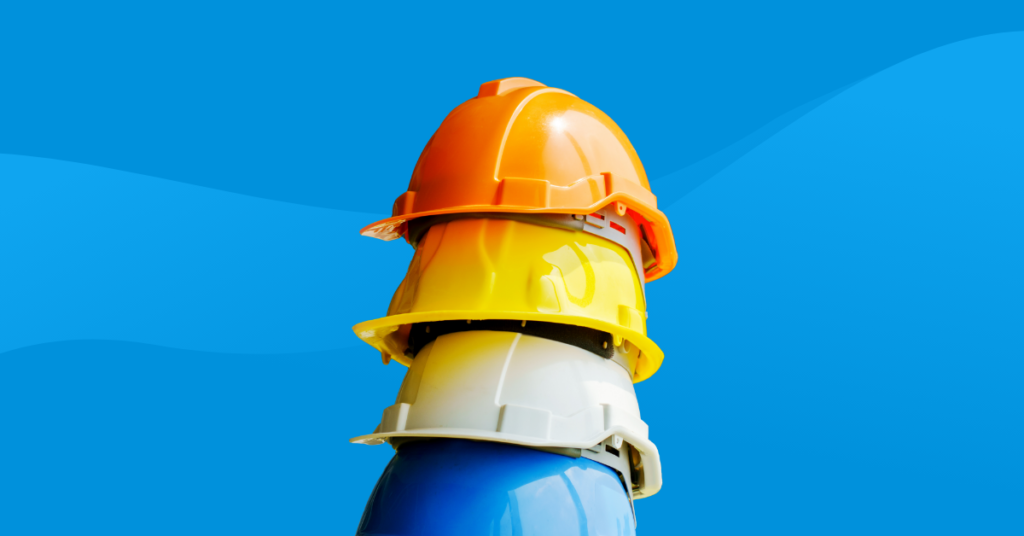Worker safety is always a top priority, and the U.S. Department of Labor’s Occupational Safety and Health Administration (OSHA) is taking steps to enhance it further. OSHA recently announced replacing traditional hard hats with more modern safety helmets.
This decision stems from a Bureau of Labor Statistics report, which stated that head injuries accounted for nearly 6 percent of nonfatal occupational injuries in 2020.

Prevalence of Head Injuries in the Workplace
When we speak about workplace injuries, head injuries are often overlooked, but they are far more common than you might think.
A report by the Bureau of Labor Statistics highlighted the total number of nonfatal occupational head injuries requiring days away from work in 2020, categorized by industry:
- Agriculture – 1,740 injuries
- Construction – 5,160 injuries
- Manufacturing – 8,850 injuries
- Retail Trade – 11,730 injuries
- Transportation and Warehousing – 5,750 injuries
- Waste Management – 860 injuries
- Healthcare & Social Assistance – 13,700 injuries
There are many reasons why these injuries occur, from slipping and falling to machinery accidents, being hit by falling objects, and more.
Rooftop workers, contractors, and electricians also face a high risk of traumatic brain injuries (TBIs). From 2003 to 2010, 2,210 construction workers died from a TBI, representing 25% of all construction fatalities during that period.
However, no matter what industry you work in, there’s always a risk of getting hurt, and a head injury is one of the most severe.
What makes head injuries so dangerous is the fact that they can cause lifelong impairment.
In addition to physical damage, they can also have negative effects on mental and emotional well-being.
Traumatic brain injuries can result in long-term disabilities, learning difficulties, and behavioral changes. They can also cause post-traumatic stress disorder (PTSD) that can last for years.
Transitioning from Hard Hats to Safety Helmets
Traditional hard hats have been used since the 1960s, protecting the top of a worker’s head but providing minimal side impact protection and lacking chin straps.
This can expose workers to the risk of injury, especially if they slip and fall.
In contrast, modern safety helmets boast advancements in design, materials, and other features that protect workers’ entire heads.
These helmets typically have chin straps that secure the helmet, preventing it from falling off the head, even in the event of a slip or fall.
Additionally, modern helmets are equipped with ventilation, eliminating the trapped heat common in traditional hard hats.
But that’s not all; modern safety helmets can also come with features like built-in face shields or goggles that protect against dust, chemical splashes, and projectiles.
These helmets also have built-in hearing protection or communication systems that enhance communication in noisy environments.
OSHA recommends safety helmets be used by:
- construction and oil and gas industry workers
- those who work in high-temperatures
- specialized work and low-risk environments
- individuals performing electrical work
- anyone working from heights
- those required by regulations or industry standards
For more details, see OSHA’s Safety and Health Bulletin.
Safety Helmets Contribute to Company Success
Companies can benefit significantly from this transition from traditional hard hats to modern safety helmets:
- Reduce the number of incidents of head injuries that can impact their workforce, production, and reputation.
- Improve employee morale by showing company value in safety and investment in technology that safeguards employee well-being.
- Company investment in modern safety helmets demonstrates a commitment to following OSHA guidelines and consequently reduces the risk of penalties and fines.
Modern safety helmets provide better protection to workers’ entire heads and have features like chin straps, ventilation, built-in face shields, goggles, hearing protection, and communication systems.
Companies that invest in these helmets protect their employees’ welfare and demonstrate their compliance with OSHA guidelines.
Making the switch to modern safety helmets is a wise decision for companies that want to prioritize worker safety, improve employee morale, and ensure compliance with regulations.
In an ever-evolving landscape of workplace safety, companies like Axiom Medical stand as trusted pillars in injury case management, a role we have upheld for over two decades.
At the heart of our robust team are OSHA-trained and educated nursing professionals with the knowledge and skills to navigate complex injury management scenarios.
Our commitment to education is unparalleled, consistently providing employers and employees with valuable OSHA education to foster a safer, healthier, and more productive environment.
Want to learn more about Axiom Medical? Contact us today!
Download our latest OSHA white paper:
Introduction to OSHA: A Guide to Workplace Safety
"OSHA’s mission is simple yet crucial - to prevent work-related injuries, illnesses, and deaths by setting and enforcing standards that promote safe and healthy working environments."
Charli Pedersen is a published writer featured on Axiom Medical’s blog. She holds a bachelor’s degree in English, Professional and Technical Writing, and has experience creating content for businesses and non-profit organizations.










